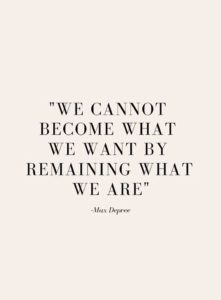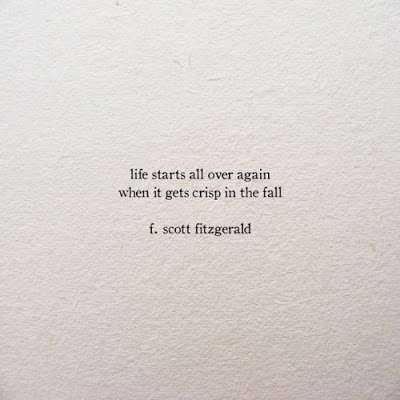As fall sweeps over through color and fresh air we find ourselves in an environment of transition. We find ourselves in a bittersweet mood as summer fades farther into memory, and we welcome the cozy and inward feels of autumn.
If you’re like me, transitional seasons might trigger a bit of sentimentality. Or a trip down memory lane, as though all the fall seasons we’ve experienced stack together and pull open like an accordion.
Why is that? Why do the seasons and nature have a way of opening us up? How do they trigger reminiscing over the past, or daydreaming about the future?
Changes in nature remind us of the one truth that we are in the habit of forgetting: change is our constant. It doesn’t matter how many times we hear the phrase, we do our best to push down its insistence and implications. But when we see nature changing, we can’t help but feel the cycles of change in our own life. We can’t forget as effectively.
We are a part of nature’s change cycles while having our own. It may bring us comfort to know that while change may not be predictable, there are certain kinds of changes that we can better understand to harness this evolutionary quality of life.
Learning About Change From Nature
Every fall, without fail, we are struck by the beauty of changing leaves. Their golds and reds reappear as they always do, yet we are captivated time again. In fact, it almost feels that with each year, we appreciate autumn even more.
Transitional seasons are the perfect time to observe and learn from nature — and we are naturally charmed to do so. Through observation we learn that nature is constantly rotating through three different functions:
- Creation — It doesn’t matter what time of year it is: creation is everywhere. You won’t have to look far to find it. From the plants that blossom and thrive in the dead of winter, to new life being born, to the creation of bird song, to a brand new sunset at the end of the day… Creation is a function constantly unfolding outside of us and within us.
- Sustaining — Sustaining is the function of nature that keeps things stable. Without stability, nothing can grow. Without sustaining, there is nothing to create upon — no canvas, no stage. Nature sustains through what maintains life — water, sunshine, nutrients, oxygen, attention, etc.
- Destruction — The function of destruction is change itself. At any given time, nature is operating on the destruction level. In nature we see destruction in the form of death, entropy, and transformation. Whether it’s leaves falling off the trees, or a fire which annihilates an entire forest, destruction is the ultimate implementor of change in nature.
Nature’s Cycles In Our Lives
As an inseparable part of nature, these exact cycles also govern our lives. We see the cycle of creation-sustaining-change in our bodies, our minds, our families, the world around us. Everywhere. Just as Nature is all around us and within us, there is nowhere we can turn where these three stages are not at play.
Understanding how these phases work independently and together will give clarity to the areas in our own life where we are flowing with or against change. The more understanding we gain, the more access we have to flowing with the laws of Nature. In this flowing, we transcend friction and have a chance at experiencing effortlessness in life.
Look Closer: Creation
If we were to pick a favorite phase, this would be the one. Everyone loves creation-mode, because creation embodies newness. And our culture loves novelty. In our lives, we see creation show up as newness: new jobs, relationships, friendships, experiences, things, homes, insights, revelations, dreams.
We love creation so much because we are ultimately creative beings. Our existence is creative, and our purposes are all creative to some extent. Creation is our inbred impulse. This phase is the making-something-out-of-nothing magic that invigorates our lives. That gives us a reason to keep on living.
Look Closer: Sustaining
Without sustaining in our lives, we cannot survive. Sustaining is our own survival, first and foremost. It is our hydration, nourishment, sleep, shelter, and love. The sustaining phase of the change cycle is our ability to maintain what it is that allows us to thrive and continue creating.
Sustaining is keeping the job you love, which makes your lifestyle possible. It’s the energy that you put into your relationships to keep them going, as they feed your heart. Making money is sustaining. Cleaning your house, getting your taxes done, going to the doctor, getting your body work, exercising — these are all versions of sustaining.
Look Closer: Destruction
Last and everyone’s least favorite: destruction. Change itself. This is the phase that we avoid with a passion. Generally, as a collective and individually, we deny, ignore, and dislike destruction in all forms. Yet destruction prevails. In our own lives, destruction are the endings. The end of a job, end of a relationship, the loss of someone or something that we love.
Destruction is when what once was stable, destabilizes. Destruction is the divorce, the mental health dilemma, natural disasters, conflict. It’s also transformation at work. So much of change happens on the mental and emotional levels as well. As we plow through old patterns and ways of being, debunk our own stories about ourselves, and overcome perceived limitations — we are seeing destruction at work.

A Self-Balancing System
The wonder about these three phases is that they all exist in an intelligence ultimately balanced by nature. Too much of one calls in another phase. Too little of one calls in another. As we start understanding these balances — we can start empowering ourselves to flow with the cycles versus being subject to them.
Too much creation calls for maintenance — Think about the last time you fell in love, started a new job, moved into a new house. What’s the urge that arises? The need for grounding! The desire to slow down, anchor into yourself, and level out — this is the call for maintenance.
Too much maintenance calls for destruction — Understanding this law is a game changer. The number one universal law is evolution. All things are constantly changing, and thus stagnancy can’t stay around for too long. Too much maintenance creates stagnancy, and therefore calls in destruction. The universe does not allow us to stay in sameness for very long.
Too much destruction — Too much destruction will call in a need for maintenance, so that new ways of being can then be created. The purpose of destruction is to make way for creation. If we are only in destruction-mode, then we are missing the point. Destruction must lead to new growth.
Embrace Change
As we get clearer on the phases and how they function, we will start to see them at play in our own lives with more clarity.
What this will mean for most of us, is we will start getting more comfortable with destruction. We’re already in love with creation and maintenance is pretty straight forward… Most of our work has to do with allowing and respecting the forces of destruction.
As it stands, our collective attitude on destruction or change is a bit harsh. Probably because destruction can be messy. It is messy! Think about bringing a building down — there’s no way to avoid dust and rubble. But what must come down will come down, and all we have to do is focus on what is going to be eventually created in its place.
We are uncomfortable with destruction because it’s scary. Destruction is scary because it always involves breaking down the known, and moving into the unknown. For all sorts of reasons, including physiological, the unknown is terrifying.
But it’s also inevitable. We all know that destruction, or change, will find us eventually. And generally, the more we avoid it, the grander an appearance it likes to make. We are going to find ourselves in the unknown, so we might as well get good at navigating that space.
Harness the Cycle
We get good at change by embracing it. Embracing change is merely a function of understanding the greater cycle and its phases. It means navigating life with a deeper knowing of natural laws:
- Destruction doesn’t last forever. It is only purposed to bring us into greater creation.
- Too much sustaining will bring destruction. So how can we implement change ourselves to avoid stagnancy?
- Creation has its time and place, but it’s not the only thing that matters.
Play with the observation of these phases in your life. Notice how they interact with each other; how they balance each other out. Observe the phases in nature, and feel yourself a part of it all.
Interesting how the leaves are the most spectacular just as they prepare to drop from the tree. Transitioning into their own phase of change, the world stops to look on in wonder. We are no different. In your willingness to embrace change, you will glimmer. The world will stop to admire.
As conscious humans, we are able to tap into the natural laws which yield beautiful truths. Change is nothing to be scared of, it is only to be embraced.


Devon Barrow is a yoga teacher for Ohana Yoga + Barre, our amazing social media manager, and a talented teacher for the YTT program. Yoga has been a part of Devon’s life since she was nine years old and continues to be her agent of healing and health. You’ll find both creativity of the physical body and the power of mindfulness in her classes.